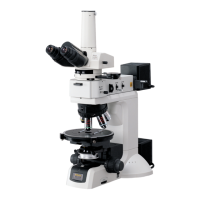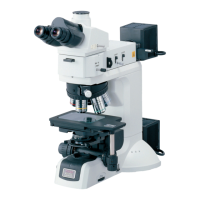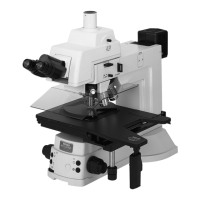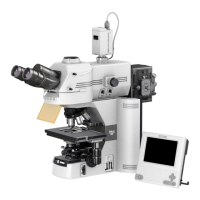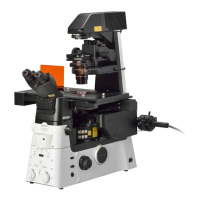5
Advantages
Darkfield
Three times brighter than previous models with the original
darkfield illuminator
Nikon’s unique “Fly-eye Lens” used in the darkfield illuminator yields a threefold
increase in brightness over previous models. This allows high-sensitivity detection of
defects and height gaps in samples.
Darkfield observation
Nomarski DIC
Improved contrast
The single prism (Senarmont) system enables DIC
observations at all magnifications with the simple
insertion of a single Nomarski prism into the nosepiece.
DIC images are clear and crisp with minimal color shades,
even at low magnifications. The L-DIHC high-contrast DIC
slider is also available, which allows the formation of DIC
images with even greater sensitivity. It achieves the
highest level of wafer crystal growth observation and
indentation observations.
* The DIHC slider has a larger shear angle than the standard L-DIC
slider. It produces high-contrast DIC images when observing
surface geometries of flat samples that do not require high
resolution.
However, depending on the sample or objective lens used, there
may be cases when greater color shades appear than with the
standard slider. The image may also appear to be two-layered.
Choose a DIC prism that matches the sample.
Polarizing
Simple polarizing
In addition to simple polarizing, a lambda plate can be
inserted into the optical path to achieve first-order red
compensator observation. This is useful for liquid crystal
inspections (when used in combination with the LV-UEPI 2).
Standard or high contrast DIC
sliders can be selected to suit
the sample. This method is
useful for the surface
observations of various
devices and precision molds.
L-DIC DIC Prism (standard) L-DIHC DIC Prism (high contrast)
L-DIC
DIC Prism
L-DIHC
High-contrast
DIC Prism
YM-PO
Polarizer
L-AN
Analyzer
YM-PO
Polarizer
L-AN
Analyzer
LV-PO
Polarizer
LV-FLAN
FL Analyzer
LV-P
Plate
LV-UEPI LV-UEPI2
Simple Polarizing
YM-PO Polarizer LV-PO Polarizer
L-AN Analyzer LV-FLAN FL Analyzer
First-order Red LV-PO Polarizer
Compensation Observation — LV-FLAN FL Analyzer
LV-P Plate
Epi-fluorescence by UV polarizing — LU-UV PO Polarizer
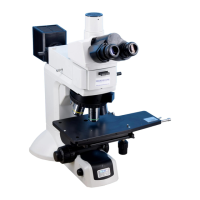
